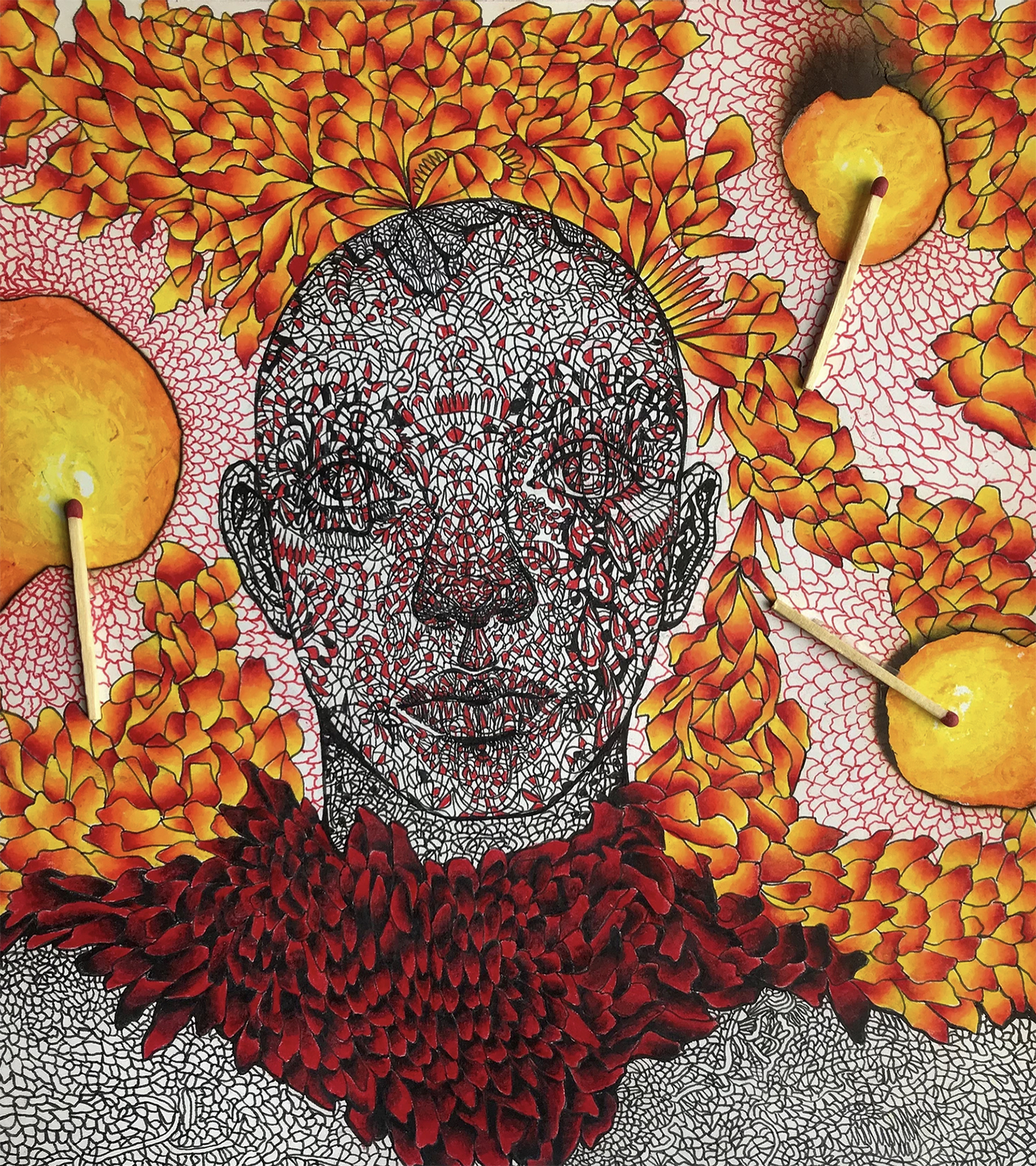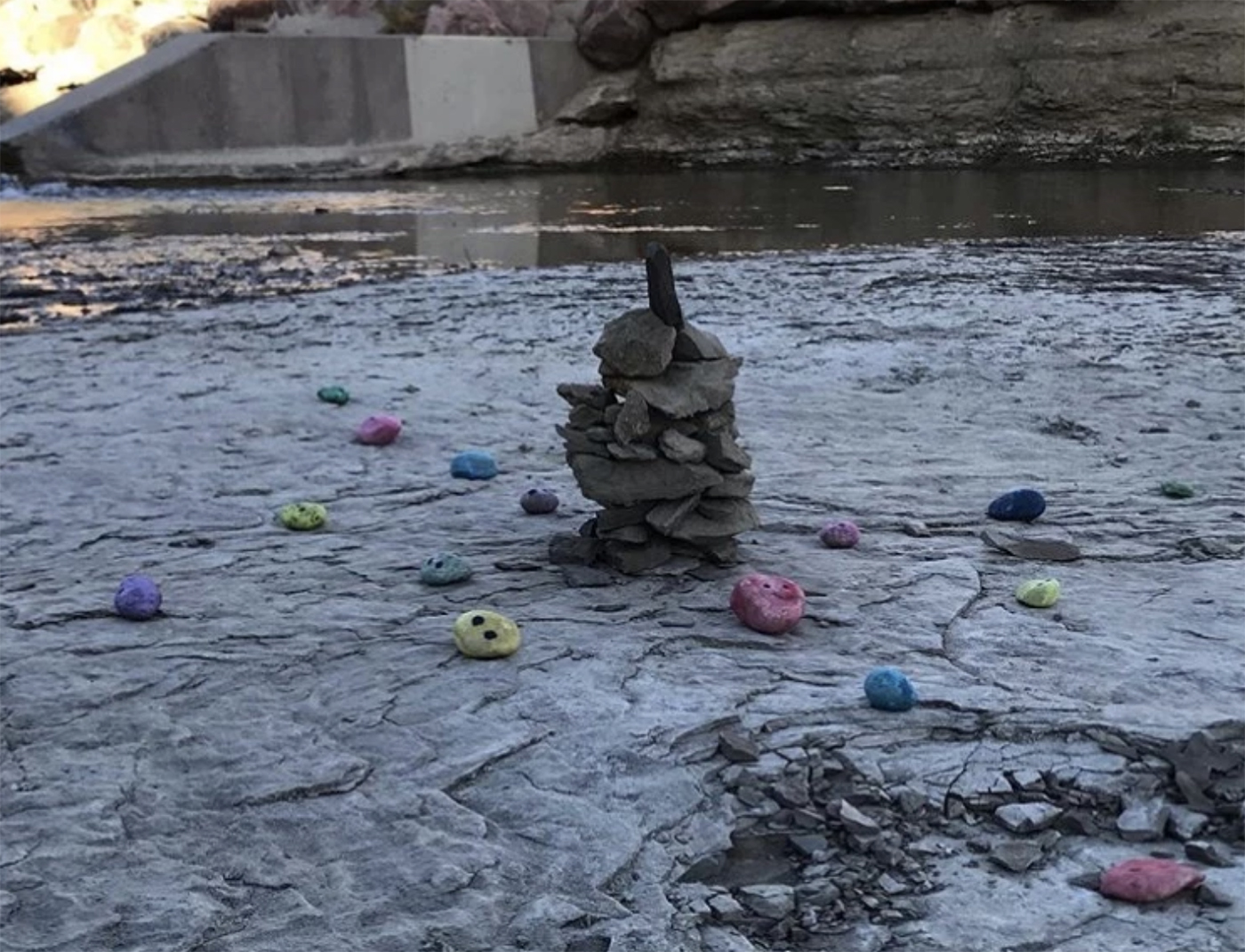This fall, writing and fine arts students collaborated to make ordinary objects extraordinary. The Third Mind Project involved students in the two disciplines coming together to elevate everyday objects into something sacred. Using an online platform to share ideas, they responded to each other’s work through poems, essays, and visual art.

Artwork by Sierra Itturino, BFA Drawing ’23, for the Third Mind Project (all images courtesy the artists)
This fall, writing and fine arts students collaborated to make ordinary objects extraordinary. The Third Mind Project involved students in the two disciplines coming together to elevate everyday objects into something sacred. Using an online platform to share ideas, they responded to each other’s work through poems, essays, and visual art.
The interdisciplinary initiative was a partnership between the “Illustration and Symbolic Imagery” fine arts course led by David Gothard, adjunct associate professor of fine arts, and the “Community as Classroom” creative writing course led by Rachel Levitsky, professor in the Writing Department. The “Third Mind” references William Burroughs’s 1977 book where he explored connections between literature and visual art with the artist and author Brion Gysin, using the cut-up technique of manipulating texts into new narratives by slicing them up and rearranging them.
“I see very direct, strong correlations between the many creative disciplines,” Gothard said. “Both writing and the visual arts employ symbolism, metaphor, simile, pathos, and humor. The idea of pairing an image with an essay or poem is a beautiful dance I wanted my students to experience.”
Levitsky has been involved with Writing Across the Curriculum (WAC) at Pratt, which engages students across disciplines in creative collaboration through writing, as well as in developing the “Creative Writing For Art and Design” workshop for art students. She drew on that experience for the Third Mind Project. “My approach encourages artists to explore writing as writing rather than as a gloss or afterthought to making a visual or conceptual work,” she said. “I was thrilled that David reached out to the Writing Department. I always seek more opportunities for Writing majors to interact with Art and Design at Pratt.”
The students were asked to create a presentation through art and writing where the context for the object—not the object itself—would elevate it into something ritualistic and worthy of veneration. The sacred object prompt for Gothard’s class predates the pandemic but had a new resonance in a year when many of us have spent more time than ever in our homes. “With everyone cloistered away in their interiors, the few significant items we surround ourselves with have taken on a new, sacred presence,” Gothard said. “The project felt relevant to now.”
The art students responded to the prompt first, employing the physical and visual techniques they had learned this semester, with the writing students then creating works of fiction based on the imagery. To join the visual artworks with the essays and poems, the class decided to develop a website with a blog complemented by a dedicated Instagram. These online platforms became fluid spaces for exchanging ideas.
“When I thought about the sacred object prompt I was primarily concerned with visual dynamics, and when we made it a collaborative effort with the Writing Department I realized that there’s a very different set of creative ideals we tap into when we’re doing a literary work versus a visual piece,” said Grace Whelan, BFA History of Art and Design ’24, who made the Third Mind Project website. Whelan, who was inspired by ancient Egyptian architecture and creation myths to make a sculptural work, was paired with writing student Victoria Kozmata, whose story describes a Pez dispenser becoming a divine object. Whelan said that the experience led to a new perspective on art through the “different ways we go about expressing words versus images and trying to distort those boundaries.”

Artwork by Wesley Ware, BFA Painting ’22, for the Third Mind Project
Other pairings include a hanging work by Eliana Szabo, BFA History of Art and Design ’23, that Lucy Nicodemus, BFA Writing ’24, responded to by writing a poem on how the daily ritual of wearing a piece of jewelry can make it sacred. Wesley Ware, BFA Painting ’22, constructed a totem-like sculpture out of stones, an ephemeral installation in an outdoor space, with Erin Lee, BFA Writing ’24, writing on how giving attention to a seemingly insignificant object—a mechanical pencil—can reveal its deeper meaning for the role it has had in a life. A three-dimensional mixed media sculpture by Gina Pratap, BFA Drawing ’23, inspired Asher Noriega, BFA Writing ’24, to consider a pyramid-shaped found object that, through a place of prominence on a dresser, is made mystical.
“This was a very interesting prompt because it made me reconsider why we hold value to certain things that we bother to keep with us,” said Noriega. “My object was just a small piece of plastic, but I shared the context of what it meant to me and the sentimentality of it.”
All of the student work can be viewed on the Third Mind Project site, showing how this timely topic resonated with the students, and how through collaborating as artists and writers they expanded their practices into new horizons.